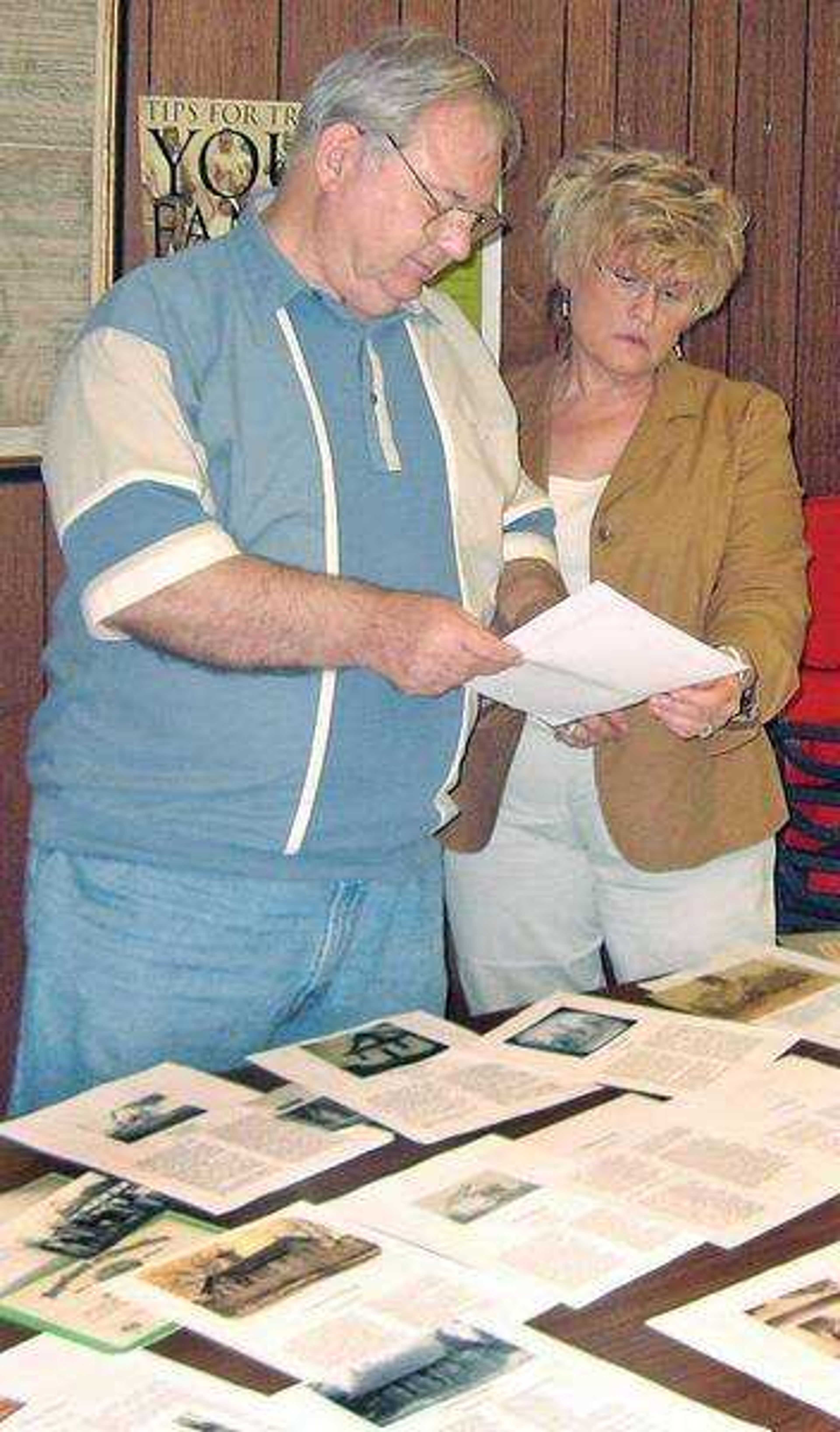Scott Co. group gathers history of one-room schoolhouses
BENTON, Mo. -- For the past 10 months, Deborah Gunter has devoted three days a week to sifting through boxes of records, doing research and talking to former teachers and students of one room schoolhouses in Scott County to be able to document a slice of that piece of history...
BENTON, Mo. -- For the past 10 months, Deborah Gunter has devoted three days a week to sifting through boxes of records, doing research and talking to former teachers and students of one room schoolhouses in Scott County to be able to document a slice of that piece of history.
And now, with six weeks left, she and other committee members from the Scott County Historical and Genealogy Society are in a final push to gather any more information available.
"It's slipping away as we speak," said Gunter, who is heading up the project. Committee members are compiling the information into a book, estimated to be about 300 pages, that is set for release in December. It will be available at some area libraries and the Sikeston Depot.
Other committee members include Margaret Heuring, Margie Jackson, Charles Bain, Conrad Hudson and Sandra Grantham.
Hudson called the project "a snapshot in education at that time in history." He said it's similar to projects that have been done in Cape Girardeau and Stoddard counties.
"Things are fading away," Gunter agreed.
To her and other members, it's important to preserve the history for future generations. Gunter said several people are interested in the project and want to see if their grandparents names are included. "A lot of people can't wait until we get this done," she said.
From old records, committee members found maps that documented the schools' names and locations. There were 58 one-room schoolhouses in Scott County and the last school -- Diebold, in Kelso, Mo. -- closed in 1968.
Committee members were then assigned schools to research by compiling information through interviews, microfilm and other methods.
"We didn't think it would be as much work as it's been," said Gunter.
Fellow committee member Bain said former students and teachers are "euphoric" about their memoirs. They're happy to share, but a bit hesitant to let their pictures go.
Because of that, he's started carrying a small copy machine with him, so he can duplicate the photos on the spot. Gunter said she and others have offered to go make copies, then return the photos immediately.
And some of the buildings are still standing, but in a different form. "Several of these schools have become homes for people," Hudson pointed out. "They have been remodeled, but you can still see the lines of what they were."
Included in the book are parochial and black schools -- although those working on the project have found it difficult to gather information on the black schools.
"We have partial lists of students, but we have not found anybody who is willing to sit down with us and talk about what happened at the black schools," said Gunter. "I have called some students, but they won't talk about it. And I know there was not segregation [at that time.] We really want to add them, because that's part of the history at that time."
The one-room schools were headed up by a county superintendent of schools -- an elected office, said Gunter. Although the committee knows of some of the county superintendents through the years, it is interested in learning more about the names and terms of each.
Those on the committee -- and who will read the book when it comes out -- will get a glimpse of what life was like for students of the one-room schoolhouses.
Some of the stories that have stuck with committee members the most are those of children who really did walk five miles to school.
"Those old stories are true," said Hudson.
Something they've learned is that teachers would keep warm water on the potbellied stove to warm up the children once they arrived. "They also had to shed their clothes when they got there ... some had frostbite," said Gunter.
Bain pointed out that walking was the only means for those children to get to school. "But as you sat there and talked to them, they said even though they had to walk, a lot of them looked forward to school every day," he said.
It was also rare for students to graduate eighth grade.
The dropouts were caused by the economic conditions -- at the time they had to drop out to help dad on the farm, said Hudson.
Until the July 1 deadline, committee members are urging anyone with documents, information or stories to contact them so that information can be included in the book.
Bain said the difficult time committee members are having in compiling some of the information should serve as an example for people to document history as it happens.
"It changes from generation to generation," he said. "It makes you wonder sometimes how the future generations will look at things as they are now."
Connect with the Southeast Missourian Newsroom:
For corrections to this story or other insights for the editor, click here. To submit a letter to the editor, click here. To learn about the Southeast Missourian’s AI Policy, click here.








